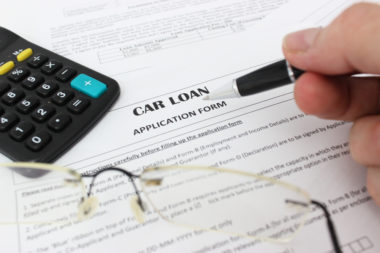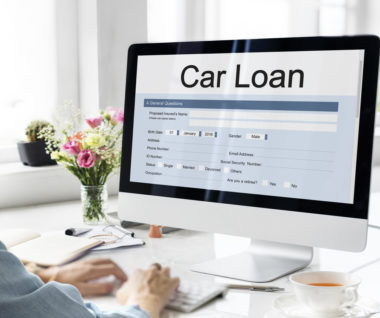When it comes to transportation, having a car is a must for most Americans. Chances are you’re going to need a car before your student loan debt is paid off, too.
If you find yourself trying to purchase a car while you’re saddled with student loan payments, go into the situation both informed and thoroughly aware of your financial limitations.
Table of Contents
Budgeting Your Money
Budgeting money is always important, but when you’re talking about managing multiple forms of significant debt it becomes critical. If you don’t take the time to carefully lay out a budget, you’ll easily end up with a car you can’t afford.
Begin your car buying journey by sitting down with your laptop or a pen and paper and creating a thorough personal budget. Remember that a well-balanced budget means your expenses do not exceed your income. Make sure to account for all of your forms of income as well as every predictable expense. Here are a few tips to keep in mind as you go:
- Distinguish between wants and needs.
- Plan your meals in order to reduce your food costs.
- Look for other creative ways to help you save money.
Once you’ve created a personal budget, you’ll officially have a good idea of how much you can spend on a car each month. Remember, this number must cover your auto loan payment, auto insurance, fuel expenses, maintenance, and repairs.
Coming up with this number is the first and most important step when it comes to negotiating a car price. However, that doesn’t mean you should head down to the dealership quite yet. The next step is looking for the best deal you can find for an auto loan.
Shopping Around for a Loan
There are several ways to go about getting the funding for your vehicle. The most traditional financing options are banks or credit unions, although there are also online lenders and dealership “captive” lenders.
This latter consists of auto lenders that offer loans to a specific dealership or auto company. Nearly 28% of auto loans end up coming from captive lenders.
However, rather than simply using the one captive lender the dealership offers you or scrambling for a loan at the last minute, it can be advantageous to shop around beforehand in order to get a good idea of the best rates available. Before you do this, though, make sure to set yourself up for success.
Improve Your Credit Score
One of the biggest factors a lender will consider is your credit score. If your score is low, you’re going to get stuck with a higher interest rate — if you’re even approved for a loan in the first place.
Ideally, you want an excellent credit score, which is typically between 750 and 850. If you’re making your student loan payments regularly on time, they will already be helping you work your way towards a higher score.
If your score isn’t excellent yet, don’t despair. There are several other ways you can boost your credit score:
- Set up payment reminders or autopay in order to make your student loan payments on time.
- Don’t add to your debt in other forms.
- Look for errors you can dispute on your credit report.
- Increase your available credit to help with your credit utilization ratio.
Improve Your DTI
Your debt-to-income ratio (DTI) is another major factor lenders will consider when you apply for a loan — and this can be complicated by the existence of a large student loan payment each month. While each lender’s threshold will vary, typically if your DTI is above 36% it may begin to affect the interest rate you qualify for.
If you think your DTI will be a roadblock as you apply for a loan, consider ways to improve it, including:
- Increasing your income. This may sound unrealistic, but all you need to do is pick up an extra gig on the side and your DTI will instantly be reduced.
- Lowering your expenses. Are there any ways you can reduce your monthly expenses? Any money saved can go towards paying down your debt and, consequently, improving your DTI.
Save for a Downpayment
Along with boosting your credit and improving your debt-to-income ratio, the more you can save for a down payment, the smaller the auto loan you’ll require. Look for ways to save as much as possible beforehand, such as:
- Creating a savings account with automated contributions.
- Reducing spending.
- Picking up a side hustle.
- Trading in your old car.
Having a larger down payment will give you a greater advantage while negotiating for lower rates.
Buying a New Car
Once you have your budget set, it’s time to choose between getting a new and a used car. The average cost of a midsize car is around $25,000, although the average for all vehicles, in general, is closer to $36,000. New cars come with a variety of pros and cons.
Pros
- A new car has a much longer lifespan.
- A new car typically comes with the latest features.
- A new car will require less maintenance and is more reliable.
- A new car will likely have better fuel economy.
- A new car will have a warranty.
Cons
- A new car may require a higher down payment.
- A new car may incur a heftier registration fee.
- A new car often costs more to insure.
- A new car loses its resale value quickly.
Buying a Used Car
According to Edmunds, used vehicle values have officially topped $20,000 in 2019 and are on the rise. While they aren’t necessarily cheap, used cars can still provide good value and have many pros and cons.
Pros
- Used cars typically require lower down payments.
- Used cars often qualify for lower insurance rates.
- Used cars can have lower registration fees.
- Used cars depreciate in value slower than new cars.
Cons
- Used cars have shorter lifespans.
- Used cars can be less efficient.
- Used cars often require maintenance and repairs.
- Used cars are not always under warranty.
- Used cars don’t have the latest features.
Image Source: https://depositphotos.com/





